The first attack on the WTC 25 years ago was a warning that could have stopped the second one on 9/11. What lessons has the FBI learned?
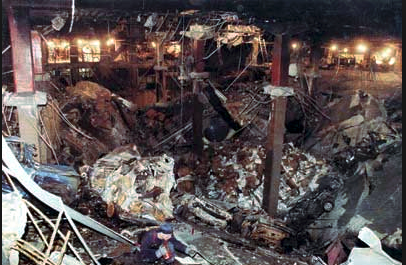 By Peter Lance February 26th, 2018. 25 years ago, just before noon, Ramzi Yousef, the brilliant but twisted bomb maker funded by Osama bin Laden, lit the fuses on a 1,500 urea-nitrate-fuel oil improvised explosive device. At 12:17:37 it ignited, blowing down through three floors of 11-inch-thick rebarred concrete creating a crater 4 stories deep. The blast killed six plus the unborn child of WTC worker Monica Smith.
By Peter Lance February 26th, 2018. 25 years ago, just before noon, Ramzi Yousef, the brilliant but twisted bomb maker funded by Osama bin Laden, lit the fuses on a 1,500 urea-nitrate-fuel oil improvised explosive device. At 12:17:37 it ignited, blowing down through three floors of 11-inch-thick rebarred concrete creating a crater 4 stories deep. The blast killed six plus the unborn child of WTC worker Monica Smith.
A thousand more were injured.
As I’ve chronicled in four books for HarperCollins, it was an act of terror that was not only preventable, but if, over the next three years, the Feds had heeded intelligence in their own files, they could have stopped al Qaeda’s second date with The Towers on 9/11, taken down in a plot planned by Yousef in 1995 and executed by his uncle Khalid Shaikh Mohammed (KSM) on September 11th, 2001.
The spiritual head of the bombing cell back in ’93 was Omar Abdel Rahman, the blind Sheikh, whose pivotal role in wreaking terror for the jihad I detailed in a piece for The Huffington Post following his death a year ago. The brutal truth behind how the FBI blew multiple chances to interdict the 9/11 plot — including stunning intel uncovered just months before AA Flight 11 hit The North Tower – is laid out in this HuffPost first published in 2006.
TRUMP’S BUREAU BASHING
Indeed, the FBI is worthy of severe criticism for the many “dots” of Bureau-gathered intel that could have stopped both acts of terror. But until now, the latest attempts by Donald Trump and his surrogates in Congress to denigrate our most important law enforcement agency have given me pause to revisit these events.
Still, as I’ve written from day one of my investigation in 2001, we need the FBI. We depend on the Bureau to protect us against acts of terror on the U.S. Homeland. So my criticism over four books in 10 years has been intended to improve the Bureau not to demonize it as “45” and his minions have done in their attacks on Robert Mueller and his incredibly worthy probe.
The flip side of that is Santayana’s dictum about forgetting history only to relive it. So it’s important, on this crucial quarter century anniversary, to look back. Why? Because the Bureau still has a gaping downside when it comes to counter-intelligence and counter terrorism.
The most recent and dangerous example was the FBI’s apparent failure, from 2013 through 2016 to appreciate Vladimir Putin’s efforts to help install a U.S. President that would do The Kremlin’s bidding — a campaign of cyber and human espionage that worked beyond the greatest expectations of what John LeCarré called Moscow Centre.
I’ve curated 100’s of investigative pieces on that subject on my latest website, investigatingtrump.com
So if you believe that “past is prelude,” sit back and scroll through Chapter 13 of “1000 Years For Revenge.“
THE BLACK BOTTOMLESS PIT:
The convoy of three vehicles left Jersey City in the early morning hours of February 26. Mohammed Salameh was behind the wheel of the rented red Corsica, the Ryder van was in the middle, and Mahmud Abouhalima followed in his blue Lincoln.
Eyad Ismoil, Yousef’s Jordanian friend, was driving the van, with Yousef in the shotgun seat. But this was no truck full of shampoo. Behind them rested the most deadly improvised explosive device ever constructed on U.S. soil. The Ryder Ford Econoline was three years old. It had 295 cubic yards of cargo space. Ismoil and Yousef sat on a single cushioned bench that ran across the front of the van. On his lap Yousef balanced a precarious cargo: four containers of highly volatile nitroglycerine in a box with newspaper wadding.
 The bomb itself consisted of four cardboard boxes filled with a slurry of urea-nitrate and fuel oil (UNFO), with waste paper as a binder. The boxes were surrounded by four-foot red tanks of compressed hydrogen. They were connected by four twenty-foot-long slow-burning fuses of smokeless power wrapped in fabric. To keep the smoke level down, Yousef had run the fuses through surgical tubing. When the time came, he would insert a nitro container in each of the boxes as an initiator. Once lit, the fuses would set off the nitroglycerine, which in turn would detonate the hydrogen gas and the UNFO slurry.
The bomb itself consisted of four cardboard boxes filled with a slurry of urea-nitrate and fuel oil (UNFO), with waste paper as a binder. The boxes were surrounded by four-foot red tanks of compressed hydrogen. They were connected by four twenty-foot-long slow-burning fuses of smokeless power wrapped in fabric. To keep the smoke level down, Yousef had run the fuses through surgical tubing. When the time came, he would insert a nitro container in each of the boxes as an initiator. Once lit, the fuses would set off the nitroglycerine, which in turn would detonate the hydrogen gas and the UNFO slurry.
Typical high explosives have a velocity of three thousand feet per second. But Yousef had designed this device to explode at a velocity five times that. At fifteen thousand feet per second, a projectile on the river side of the Trade Center Towers in Lower Manhattan would be blown into New Jersey in less than a second.
The convoy passed through the Holland Tunnel. Once in Manhattan, it turned down West Street and took the Battery Tunnel to the Harbor Motor Inn in Brooklyn. The original target time for the bombing was to be just after 9:00 a.m., as the Twin Towers were filling up with workers.
But that night, incredibly, Yousef overslept, and the hapless Salameh failed to wake him. When he got up that morning, Yousef looked across New York Harbor at the Trade Center. The day was cloudy, and snow had been predicted. It would be noon by the time they reached Manhattan, but Yousef wasn’t worried. Even at lunchtime the Trade Center complex held enough people to populate a city the size of Dearborn, Michigan. The population belowground was much smaller.
The enormous towers sat in a vast concrete “bathtub” imbedded in the ancient colonial landfill of lower Manhattan. The size of eight city blocks, it had walls seventy feet high and three feet thick to keep out the Hudson River. Three hundred men worked in the seven-story basement area, along with a handful of women.
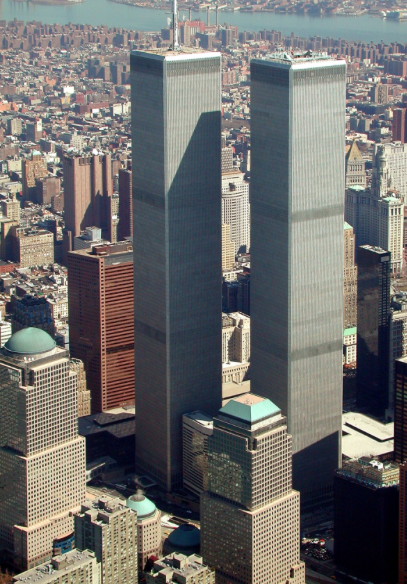 One of them was Monica Smith, a pretty thirty-five-year-old immigrant from Ecuador who worked as a secretary in Room 107 on the B-2 basement level. It was Monica’s job to check the time sheets submitted to the Port Authority by outside contractors hired to clean the Trade Center. She had met her husband, Eddie, a machine salesman, at the Twin Towers. They had bought their first house in the Long Island suburbs, and now Monica was seven months pregnant with their son, a little boy they planned to name Eddie Jr.
One of them was Monica Smith, a pretty thirty-five-year-old immigrant from Ecuador who worked as a secretary in Room 107 on the B-2 basement level. It was Monica’s job to check the time sheets submitted to the Port Authority by outside contractors hired to clean the Trade Center. She had met her husband, Eddie, a machine salesman, at the Twin Towers. They had bought their first house in the Long Island suburbs, and now Monica was seven months pregnant with their son, a little boy they planned to name Eddie Jr.
At a few minutes before noon on that Friday, she was sitting at her desk eating a lunch of homemade eggplant parmigiana when the yellow Port Authority van on the ramp outside pulled away. Moments later, Monica barely noticed when another yellow van rolled in. When Ismoil shut off the ignition, Yousef carefully handed him the box of nitro.
The bomb maker then went into the back and painstakingly inserted a nitroglycerine container into each of the four boxes. He put a Rockmaster blasting cap in each container, then inserted the surgical tubing surrounding the fuses. When that was done, Yousef set them on fire with a cheap cigarette lighter. He nodded calmly to Ismoil and they exited the van as the fuses started to burn. The Ryder van was parked along the load-bearing south wall of the North Tower. 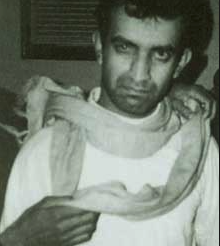
It was Yousef’s hope that when the fifteen-hundred-pound device detonated, the force would blow laterally, cracking the supports at the skyscraper’s base.
Now, as they climbed into the Corsica and sped to the exit, the high-strung Mohammed Salameh’s heart almost stopped. There, at the mouth of the garage ahead of them, another van was blocking the exit. The fuses would ignite the huge bomb in less than twelve minutes. Yousef checked his watch. Eleven minutes and thirty seconds to go. Salameh slammed on the Corsica’s horn.
The van driver waved him off, so Salameh got out, almost frantic, and began screaming at him. Two minutes went by as the fuses burned down, and Ramzi Yousef wondered to himself if Allah had willed him to be a casualty of his own device. By now, Ismoil was pushing the horn over and over. Worried that Port Authority cops might respond, Yousef grabbed the Jordanian’s wrist, but Ismoil jumped out and began bellowing at the van driver with Salameh. The two of them were almost apoplectic. Ismoil checked his watch: eight minutes to go.
But Yousef, the man with ice water in his veins, stayed calm. Finally the van pulled out, and Salameh jumped back into the driver’s seat. Ismoil was barely inside when Salameh gunned it and screeched out into the cold February chill of lower Manhattan.
At that moment Mahmud Abouhalima, the big Egyptian whom the FBI had lost track of, was standing at the window inside J&R Music World on Park Row. He was worried. According to the schedule, they should have been out by now. He began pacing back and forth along the window, cursing under his breath in Arabic.
A few people flashed looks at the big redhead but he didn’t care. Something must be going wrong.
A few blocks away, FBI Special Agent Nancy Floyd was having lunch with a girlfriend visiting from California. Her last contact with Emad Salem had been in the fall. She had recruited the heroic Egyptian ex-Army officer who first infiltrated the bombing cell a year earlier, only see him forced out when an FBI ASAC arrogantly demanded that he wear a wire.
Nancy had buried herself in work with the Special Operations Group. In her off hours she was getting her home in Stamford ready for the arrival of her mother, who was coming to Connecticut to live with her. 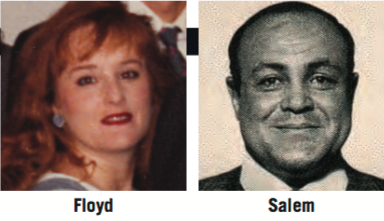
At this point in late February, the last thing on her mind was the aborted investigation into the bomb plot. She glanced at her watch as they headed up Church Street. It was 12:17 P.M.
A few moments later, at 12:17:37, the flames hit the blasting caps.
The shock wave detonated the nitroglycerin, causing it to vaporize into a gas with the force of 150,000 pounds per square inch. The other containers exploded and obliterated the van, which tore through the office wall into Room 107. In the millisecond it would take a human being to read the word bomb, the shock wave seared the imprint of Monica Smith’s sweater into her shoulder.
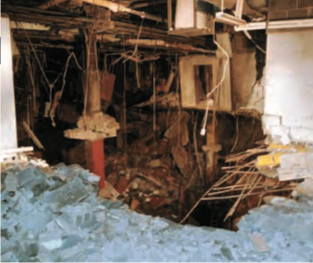 The fragments of concrete block from the imploding outer wall blew her across the office. Her lungs, arteries, and internal organs were ripped open by the blunt impact trauma. Her shoulders, ribs, and pelvis were shattered. The fetus she was carrying was instantly crushed. Monica’s husband, Eddie, was in a meeting at work when a coworker came in to announce that there had been a “fire” at the Trade Center.
The fragments of concrete block from the imploding outer wall blew her across the office. Her lungs, arteries, and internal organs were ripped open by the blunt impact trauma. Her shoulders, ribs, and pelvis were shattered. The fetus she was carrying was instantly crushed. Monica’s husband, Eddie, was in a meeting at work when a coworker came in to announce that there had been a “fire” at the Trade Center.
Eddie was worried, but concern moved to panic a few minutes later when the man came back and said that it had been an explosion. Eddie immediately began calling Monica’s number in what was now the shattered Room 107 at ground zero. When he got no answer, he raced to his car and headed downtown. Fifty-five thousand people worked in the Trade Center complex. Another ninety thousand traveled through every day.
Now, as tens of thousands of workers rushed down the smoke-clogged stairwells, hundreds of fire, police, and EMS workers surrounded the sixteen-acre site. A total of 775 uniformed firefighters from 135 companies responded from the FDNY alone. Lower Manhattan was thrown into a state of gridlock. It wasn’t until eleven o’clock that night that Eddie Smith, keeping the vigil at Monica’s brother’s house, got word through a friend that his wife’s body was at the city morgue. Eddie’s knees buckled when he heard the news.
He dialed the medical examiner’s office, but the person who answered refused to tell him anything other than that he ought to come down. Eddie was getting ready to make the drive in to the morgue on First Avenue, when he called his father on Long Island. A Nassau County police officer who was there referred him to an NYPD detective. Heart pounding now, Eddie dialed the cop, who confirmed that his wife was dead. Eddie almost collapsed, but he recovered enough to ask about his son. After all, there was still hope. “What about the baby?” he said. There was a pause; then the detective said, “Sir, do you have any idea how bad it was?”
A FOUR STORY DROP
The first call into the FDNY’s Manhattan Fire Communications office after the blast came at 12:18 P.M. Dispatcher Herb Eysser in the Alarm Response Dispatch position picked up. A woman, her voice trembling with fear, said, “…an explosion in the garage of the Vista Hotel.” In less than a minute the firefighters from “Ten and Ten” (10 Engine and 10 Truck) roared around the corner from their house on Liberty Street and ran into the lobby of the twenty-two-story luxury hotel at the base of the South Tower.
Panicked people were rushing outside to West Street. Initial reports to the FDNY indicated a “transformer fire,” so the first responders from Ten and Ten had no idea of the devastation that lay beneath them. Ramzi Yousef’s urea-nitrate bomb had blown through three floors of eleven-inch-thick rebarred concrete.
 The crater was 200 feet long, 125 feet wide, and four stories deep. The fractured pieces of cinder block that had killed Monica Smith rocketed across the hall from Room 107 to a lunchroom where three Port Authority workers had just finished eating. Bob Kirkpatrick, sixty-one, the Trade Center’s chief locksmith, was blown across the room and crushed.
The crater was 200 feet long, 125 feet wide, and four stories deep. The fractured pieces of cinder block that had killed Monica Smith rocketed across the hall from Room 107 to a lunchroom where three Port Authority workers had just finished eating. Bob Kirkpatrick, sixty-one, the Trade Center’s chief locksmith, was blown across the room and crushed.
Concrete pellets drove like bullets into the face of fifty-seven-year-old Bill Macko, a heating specialist.
Particles of concrete moving at a thousand miles per second shot into the eyes of forty-eight-year-old Steven Knapp. Outside in the garage, John DiGiovanni, a forty-five-year-old dental equipment salesman, had just parked his car when the sparks from Yousef’s fuses hit the Atlas Rockmaster blasting caps. His body was blown thirty feet up a ramp near the exit to West Street.
In the chaos that followed, DeGiovanni lay wounded for almost an hour before an EMS rescue team found him and rushed him to St. Vincent’s Hospital. He was pronounced dead at 2:20 p.m. The body of the sixth victim, thirty-seven-year-old Willie Mercado, wasn’t located for days. A receiving agent for Windows on the World, the restaurant atop the North Tower, Mercado was sitting in a chair, taking a break on the B-2 level, when the nitro ignited the UNFO slurry. The hurricane force of the explosion picked him up and hurled his body down into the enormous four-story pit below.
Crushed under twelve feet of concrete, he was still in the chair when they found him. The blast shorted out five of the eight high-voltage feeder lines from Manhattan’s electrical grid. Elevators stopped between floors, loaded with terrified people. One of them, with seventy schoolchildren inside, dangled hundreds of feet above street level for five hours.
Thousands of terrified office workers rushed in the dark down the emergency stairwells, now thick with black smoke. They spilled onto the plaza below, choking, covered in soot, bleeding, and crying. A pregnant woman went into labor on the ninety-second floor. But in the initial minutes after the blast, few people had any sense of what had caused the Towers to quake.
 FDNY Fire Marshal Ronnie Bucca had been investigating an incendiary fire in the Bronx when word came over his BFI radio that there’d been an incident at the Trade Center. He went to his Chevy, switched to the FDNY Dispatch frequency, and heard the transmission of a 10-76—the code for a major high-rise “working fire.” The response called for four engines, four ladders, and four battalion chiefs, along with Rescue One. Ronnie’s first thought was to call his old company and find out how bad it was, but they were probably out the door, so he turned on WCBS Radio. By now the anchor was reporting “an explosion” on the B-2 level.
FDNY Fire Marshal Ronnie Bucca had been investigating an incendiary fire in the Bronx when word came over his BFI radio that there’d been an incident at the Trade Center. He went to his Chevy, switched to the FDNY Dispatch frequency, and heard the transmission of a 10-76—the code for a major high-rise “working fire.” The response called for four engines, four ladders, and four battalion chiefs, along with Rescue One. Ronnie’s first thought was to call his old company and find out how bad it was, but they were probably out the door, so he turned on WCBS Radio. By now the anchor was reporting “an explosion” on the B-2 level.
Ronnie hit the ignition and slammed the red “Kojak” bubble on his roof, racing back to Bronx Base to await orders.
Soon the Trade Center bomb would produce the largest movement of apparatus in FDNY history. Fire and EMS units rushed 228 people to area hospitals. Another 474 of the injured were treated on the scene for smoke inhalation, including 155 firefighters. But one of them came close to death that day—and, as fate would have it, he was one of Ronnie Bucca’s closest friends.
Kevin Shea had been on the job for nine years. He’d made it through 227 Engine in Brownsville and 108 Truck in Williamsburg, two of the roughest companies in Brooklyn, before qualifying into the coveted Rescue One house on West Forty-third Street. Seconds after the 10-76 came in, Shea jumped into his boots and onto the back of the Mack R. The truck roared off the apparatus floor and down Eleventh Avenue to West Street.
“On the way downtown, as one alarm came in and then another,” said Shea, “the word we got was ‘transformer explosion.’ ” As they screeched up in front of the Vista Hotel, Shea, his partner, Gary Geidel, their lieutenant, and three other men from the company headed into the lobby. People were running out screaming. Frightened Port Authority workers said others were trapped downstairs. The firefighters headed into a service stairwell and formed a single line searching for survivors.
At that point the smoke was black and acrid; it had a smell consistent with transformer fluid, but the men from Rescue One had no idea what they were walking into. Suddenly, the lieutenant at the head of the line heard a man calling for help. Firefighters Shea and Geidel opened a door onto what they thought was a stairwell in the direction of the voice. “The smoke was pitch, pitch black,” Shea recalled.
“We were calling out. Gary had his arm along the wall as we moved down what we realized now was a ramp to the parking garage. I kept my arm on Gary, so we had a wider search area. We got the callback, ‘Help! Help!’ The smoke condition was so dense, visibility was just a few inches. As we moved along, we didn’t realize it, but we were approaching the edge of the crater. We couldn’t see our feet in front of us.”
By now they had their masks on; breathing from the Scott packs on their backs. Then, as they inched their way forward, a part of the floor gave way. Pieces of concrete began to break off. Geidel slipped into a knee-deep hole, and Shea went over the edge.
Unknowingly, they had come to a point where the floor to B-1 had sheared off. Shea quickly grabbed onto two pieces of rebar protruding from the concrete, but his gloves caused him to slip. Geidel’s eyes went wide as he leaned forward and saw orange flames from the inferno below.
“Gary said, ‘There’s fire beneath you, Kev. If you drop, just roll.’ ”
Shea looked down and saw the orange glow. “I figured I was going into the transformer pit,” said Shea. “I couldn’t hold on anymore, and I fell.” But instead of dropping ten feet to the floor below, he kept going, down toward the ruptured concrete garage floor on B-4.
As he fell, Shea saw flashes of orange flames on the fractured floors at each level of the parking garage. He remembered Ronnie talking about that day when he’d dropped the five floors into the alley. Now he was heading feet first into what seemed like a black bottomless pit, ringed with thousand-degree flames.


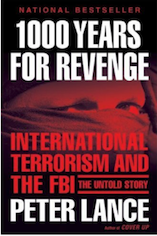

Recent Comments